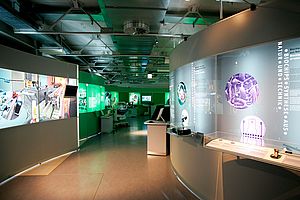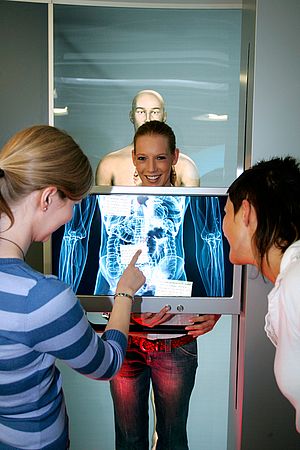Take a look into the human body
Modern imaging processes minimise harm and discomfort to the patient, can be used very quickly and deliver higher resolution images. Devices for computer-aided diagnosis evaluate signals derived from the ECG and provide aids to diagnosis. Automation enables an even greater degree of precision in the analysis of laboratory samples.
More and more parameters can now also be taken at the patient's bedside without causing any delay. The digital creation and storage of image and signal data is of vital importance in telemedical applications such as remote diagnosis.
It turns out that modern computers may support physicians throughout the process of making a diagnosis but they cannot replace them.
Major exhibits:
- Computer tomograph, simulation of a scan
- Gallery of imaging processes (totalbody and organ scans)
- Ultrasonography
- Digital X-ray technology
- CAD Computer aided diagnosis
- Retina tomograph, glaucoma diagnosis
- Computer-aided vision test (sight test)
- Computer-aided auditory test (soundfield and speech audiometry)
- Electrocardiograph with evaluation
- Capsule endoscopy, simulation
- Digital and virtual endoscopy
- POCT Point of care testing
- Biochips / lab on a chip

